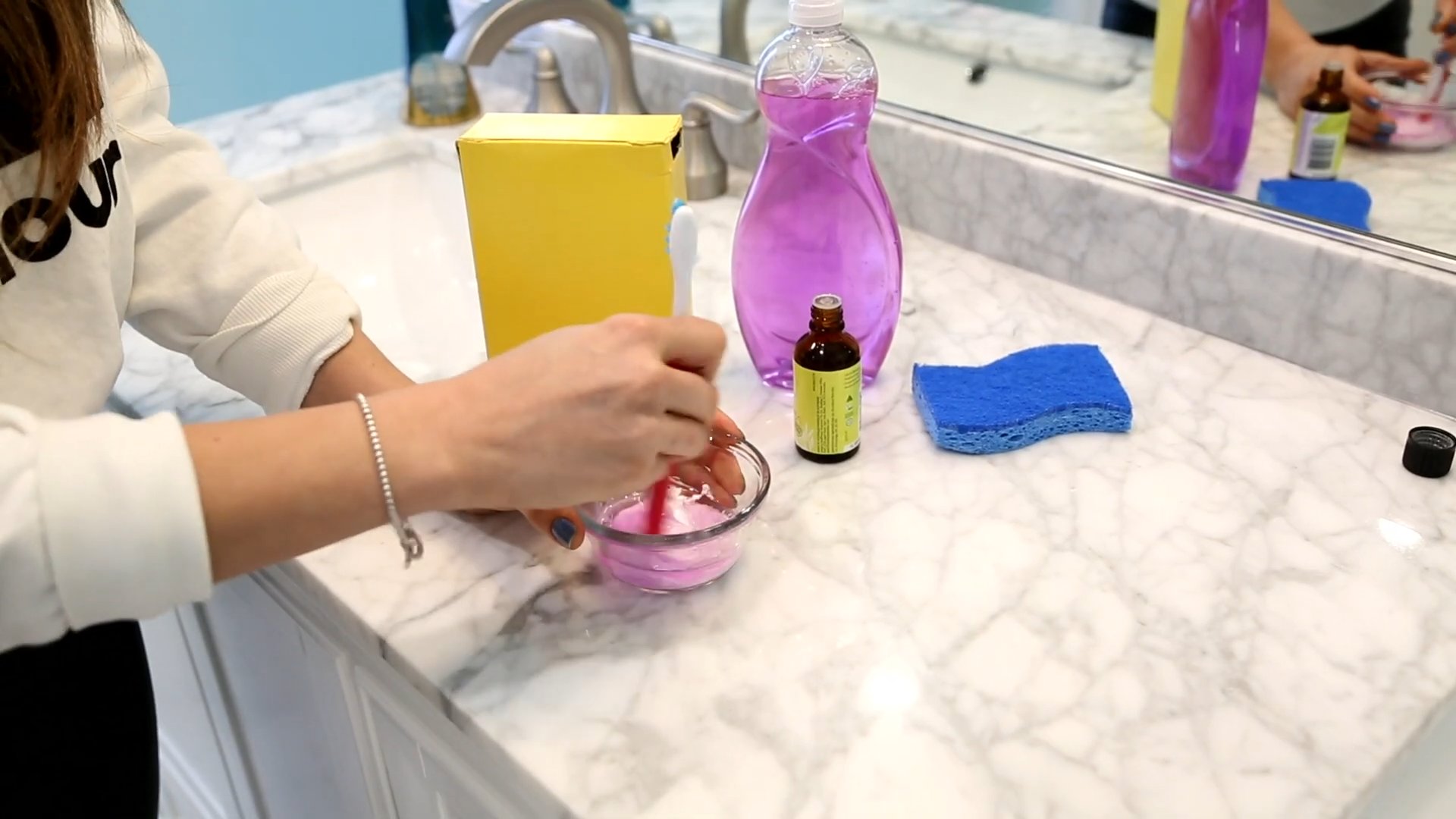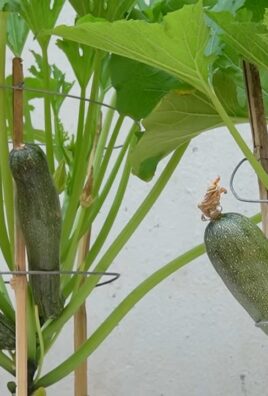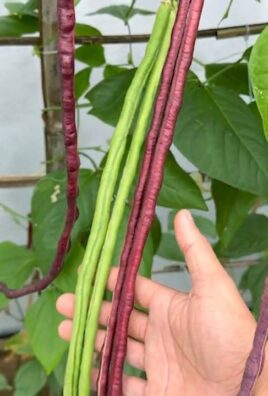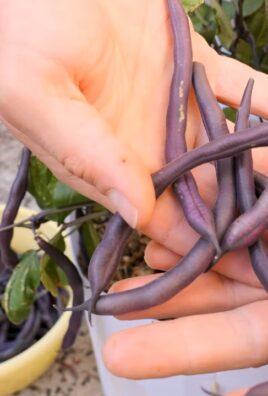Grow Bok Choy at Home – and unlock a world of fresh, flavorful possibilities right in your backyard (or even on your balcony!). Have you ever dreamed of snipping vibrant, crisp greens just moments before adding them to your stir-fry? Or perhaps you’re simply looking for a rewarding and sustainable way to supplement your grocery shopping? Well, you’re in the right place!
Bok choy, also known as pak choi, isn’t just a delicious and versatile vegetable; it’s also steeped in history. Originating in China, this member of the cabbage family has been cultivated for over 5,000 years, making its way into countless culinary traditions across Asia and beyond. Imagine connecting with that rich heritage as you nurture your own bok choy plants.
But why should you learn to grow bok choy at home? In today’s world, knowing where your food comes from is more important than ever. Store-bought produce can be expensive, and sometimes lacks the freshness and flavor we crave. Plus, growing your own bok choy allows you to control exactly what goes into your food, avoiding harmful pesticides and ensuring a healthy, organic harvest. I’m going to show you some simple DIY tricks and hacks that will make growing bok choy at home easier than you ever thought possible. Get ready to enjoy the satisfaction of harvesting your own delicious, homegrown greens!

Grow Your Own Delicious Bok Choy: A Beginner’s Guide
Hey there, fellow gardening enthusiasts! I’m so excited to share my experience with growing bok choy at home. It’s surprisingly easy, even if you’re a complete newbie like I was. Bok choy, also known as pak choi, is a fantastic leafy green that’s packed with nutrients and adds a delightful crunch to stir-fries, soups, and salads. Plus, growing your own means you get the freshest, most flavorful bok choy possible!
Why Grow Bok Choy?
Before we dive into the how-to, let’s quickly cover why you should even bother.
* Freshness: Nothing beats the taste of freshly harvested bok choy.
* Cost-effective: Growing your own can save you money in the long run.
* Nutritious: Bok choy is loaded with vitamins and minerals.
* Easy to grow: Seriously, it’s one of the easiest veggies to cultivate.
* Beautiful in the garden: Its vibrant green leaves add a touch of beauty to your garden.
Getting Started: What You’ll Need
Okay, let’s gather our supplies. Here’s what you’ll need to grow your own bok choy:
* Bok Choy Seeds: Choose a variety that suits your climate and preferences. I personally love ‘Mei Qing Choi’ for its compact size and mild flavor.
* Seed Starting Trays or Small Pots: These are for starting your seeds indoors.
* Seed Starting Mix: A light and airy mix that’s perfect for delicate seedlings.
* Gardening Gloves: To keep your hands clean and protected.
* Watering Can or Spray Bottle: For gentle watering.
* Fertilizer: A balanced fertilizer or compost tea to feed your plants.
* Garden Soil or Raised Bed: Where your bok choy will eventually grow.
* Trowel or Garden Shovel: For transplanting.
* Optional: Row Covers: To protect your plants from pests and extreme weather.
Phase 1: Starting Your Seeds (Indoors or Outdoors)
You can start bok choy seeds either indoors or directly in your garden, depending on your climate and the time of year. I prefer starting them indoors to get a head start, especially if I’m aiming for an early spring harvest.
Starting Seeds Indoors:
1. Prepare Your Seed Starting Trays: Fill your seed starting trays or small pots with seed starting mix. Gently pat it down to remove any air pockets.
2. Sow the Seeds: Make a small indentation (about ¼ inch deep) in the soil of each cell or pot. Place 2-3 bok choy seeds in each indentation. This increases the chances of at least one seed germinating.
3. Cover the Seeds: Gently cover the seeds with a thin layer of seed starting mix.
4. Water Gently: Use a watering can or spray bottle to moisten the soil. Avoid overwatering, as this can lead to damping-off disease.
5. Provide Warmth and Light: Place the trays in a warm location (around 65-75°F) with plenty of light. A sunny windowsill or a grow light works well.
6. Keep the Soil Moist: Check the soil daily and water as needed to keep it consistently moist but not soggy.
7. Thin the Seedlings: Once the seedlings have developed their first true leaves (the second set of leaves), thin them out by snipping off the weaker seedlings with scissors, leaving only one strong seedling per cell or pot.
Starting Seeds Outdoors:
1. Prepare the Soil: Choose a location in your garden that receives at least 4-6 hours of sunlight per day. Loosen the soil and amend it with compost or other organic matter to improve drainage and fertility.
2. Sow the Seeds: Sow the seeds directly into the soil, spacing them about 1-2 inches apart in rows that are 12-18 inches apart. Make sure the seeds are planted about ¼ inch deep.
3. Water Gently: Water the soil gently to moisten it.
4. Keep the Soil Moist: Keep the soil consistently moist until the seeds germinate.
5. Thin the Seedlings: Once the seedlings emerge, thin them out to about 6-8 inches apart.
Phase 2: Transplanting Your Seedlings (If Started Indoors)
Once your seedlings have developed a few sets of true leaves and are about 3-4 inches tall, it’s time to transplant them into your garden.
1. Harden Off the Seedlings: Before transplanting, you’ll need to harden off the seedlings. This means gradually exposing them to outdoor conditions over a period of 7-10 days. Start by placing them in a sheltered location outdoors for a few hours each day, gradually increasing the amount of time they spend outside.
2. Prepare the Garden Bed: Choose a location in your garden that receives at least 4-6 hours of sunlight per day. Loosen the soil and amend it with compost or other organic matter to improve drainage and fertility.
3. Dig Holes: Dig holes that are slightly larger than the root balls of your seedlings, spacing them about 6-8 inches apart.
4. Carefully Remove the Seedlings: Gently remove the seedlings from their trays or pots, being careful not to damage the roots.
5. Place the Seedlings in the Holes: Place the seedlings in the holes, making sure the top of the root ball is level with the surrounding soil.
6. Fill in the Holes: Fill in the holes with soil and gently pat it down.
7. Water Thoroughly: Water the seedlings thoroughly after transplanting.
Phase 3: Caring for Your Bok Choy Plants
Now that your bok choy plants are in the ground, it’s time to provide them with the care they need to thrive.
1. Watering: Bok choy needs consistent moisture to grow well. Water your plants regularly, especially during dry spells. Aim to keep the soil consistently moist but not soggy.
2. Fertilizing: Feed your bok choy plants with a balanced fertilizer or compost tea every 2-3 weeks. This will help them grow strong and healthy.
3. Weeding: Keep the area around your bok choy plants free of weeds. Weeds can compete with your plants for nutrients and water.
4. Pest Control: Bok choy can be susceptible to pests such as aphids, flea beetles, and cabbage worms. Inspect your plants regularly for signs of pests and take action as needed. You can use organic pest control methods such as insecticidal soap or neem oil. Row covers can also help protect your plants from pests.
5. Bolting Prevention: Bok choy is prone to bolting (going to seed) in hot weather. To prevent bolting, plant your bok choy in early spring or late summer. You can also provide shade for your plants during the hottest part of the day.
Phase 4: Harvesting Your Bok Choy
You can start harvesting your bok choy when the leaves are about 6-8 inches long.
1. Harvesting Individual Leaves: You can harvest individual leaves as needed, starting with the outer leaves. This will allow the inner leaves to continue to grow.
2. Harvesting the Entire Plant: You can also harvest the entire plant at once. To do this, cut the plant off at the base with a sharp knife.
3. Washing and Storing: Wash your bok choy thoroughly after harvesting. Store it in the refrigerator in a plastic bag or container. It should last for about a week.
Tips for Success
Here are a few extra tips to help you grow the best bok choy possible:
* Choose the Right Variety: Select a bok choy variety that is well-suited to your climate and growing conditions.
* Provide Adequate Sunlight: Bok choy needs at least 4-6 hours of sunlight per day.
* Water Regularly: Keep the soil consistently moist but not soggy.
* Fertilize Regularly: Feed your plants with a balanced fertilizer or compost tea every 2-3 weeks.
* Protect from Pests: Inspect your plants regularly for signs of pests and take action as needed.
* Prevent Bolting: Plant your bok choy in early spring or late summer to avoid bolting.
Troubleshooting
Even with the best care, you might encounter some problems while growing bok choy. Here are a few common issues and how to address them:
* Aphids: These tiny pests can suck the sap from your plants, causing them to become weak and stunted. Spray your plants with insecticidal soap or neem oil to control aphids.
* Flea Beetles: These

Conclusion
So, there you have it! Growing your own bok choy at home is not only surprisingly simple, but it’s also incredibly rewarding. Imagine stepping out into your garden or even just onto your balcony and harvesting fresh, crisp bok choy whenever you need it. No more last-minute trips to the grocery store or settling for wilted, pre-packaged greens. This DIY approach puts you in control of your food, ensuring you have access to the freshest, most nutritious ingredients possible.
But the benefits extend beyond mere convenience. By growing your own bok choy, you’re also reducing your carbon footprint, supporting sustainable practices, and connecting with nature in a tangible way. Plus, let’s be honest, there’s a certain satisfaction that comes from nurturing a plant from seed to harvest. It’s a small act of self-sufficiency that can bring a surprising amount of joy.
Why is this DIY trick a must-try? Because it empowers you to enjoy fresh, healthy bok choy without the hassle or expense of relying solely on store-bought options. You’ll know exactly where your food comes from and how it was grown, giving you peace of mind and a deeper appreciation for the food on your plate.
Looking for variations? Consider experimenting with different varieties of bok choy. Baby bok choy is perfect for quick stir-fries, while Shanghai bok choy offers a slightly sweeter flavor. You can also try growing bok choy in containers if you have limited space, or even indoors with the help of grow lights. Don’t be afraid to get creative and adapt the process to suit your specific needs and preferences.
Another fun variation is to succession plant your bok choy. Since bok choy grows relatively quickly, you can sow new seeds every few weeks to ensure a continuous harvest throughout the growing season. This is especially useful if you enjoy bok choy regularly in your meals.
We encourage you to give this DIY trick a try. It’s easier than you might think, and the rewards are well worth the effort. Once you’ve experienced the joy of harvesting your own homegrown bok choy, you’ll never look at store-bought greens the same way again.
And most importantly, we want to hear about your experience! Share your tips, tricks, and photos with us in the comments below. Let’s build a community of bok choy enthusiasts and inspire others to embrace the joys of home gardening. Did you encounter any challenges? What worked particularly well for you? Your insights could be invaluable to other aspiring gardeners. So, get your hands dirty, embrace the process, and let’s grow some delicious bok choy together! Remember, mastering the art of growing bok choy at home is a journey, not a destination. Enjoy the process, learn from your mistakes, and celebrate your successes. Happy gardening!
Frequently Asked Questions (FAQ)
What is the best time of year to plant bok choy?
Bok choy is a cool-season crop, meaning it thrives in cooler temperatures. The best time to plant bok choy is in early spring or late summer/early fall. Avoid planting during the hottest months of summer, as high temperatures can cause the plants to bolt (go to seed prematurely), resulting in a bitter taste. In spring, plant after the last frost. For a fall harvest, sow seeds about 4-6 weeks before the first expected frost.
How much sunlight does bok choy need?
Bok choy prefers partial shade, especially during the warmer months. While it can tolerate full sun, too much direct sunlight can scorch the leaves. Aim for at least 4-6 hours of sunlight per day. If you live in a particularly hot climate, providing afternoon shade can help prevent bolting.
What kind of soil is best for growing bok choy?
Bok choy prefers well-drained, fertile soil that is rich in organic matter. Amend your soil with compost or well-rotted manure before planting to improve drainage and nutrient content. The ideal soil pH for bok choy is between 6.0 and 7.5.
How often should I water bok choy?
Bok choy needs consistent moisture to thrive. Water regularly, especially during dry periods. Aim to keep the soil consistently moist but not waterlogged. Mulching around the plants can help retain moisture and suppress weeds. Check the soil moisture regularly by sticking your finger about an inch deep into the soil. If it feels dry, it’s time to water.
How long does it take for bok choy to mature?
Bok choy is a relatively fast-growing crop. Depending on the variety, it typically takes between 30 and 50 days to mature. Baby bok choy can be harvested even earlier, usually around 30 days.
What are some common pests and diseases that affect bok choy?
Common pests that can affect bok choy include aphids, cabbage worms, flea beetles, and slugs. Diseases include downy mildew, clubroot, and leaf spot. Regularly inspect your plants for signs of pests or diseases. Use organic pest control methods such as insecticidal soap, neem oil, or handpicking pests. Ensure good air circulation to prevent fungal diseases. Crop rotation can also help prevent soilborne diseases.
How do I harvest bok choy?
You can harvest bok choy at any stage of maturity, depending on your preference. For baby bok choy, harvest when the leaves are small and tender. For mature bok choy, harvest when the heads are firm and well-formed. To harvest, simply cut the entire head at the base of the plant with a sharp knife. You can also harvest individual leaves as needed, starting with the outer leaves.
Can I grow bok choy in containers?
Yes, bok choy can be successfully grown in containers. Choose a container that is at least 12 inches deep and wide to allow enough room for the roots to grow. Use a well-draining potting mix and water regularly. Container-grown bok choy may need more frequent watering than plants grown in the ground.
How do I prevent bok choy from bolting?
Bolting is when a plant prematurely flowers and goes to seed, often resulting in a bitter taste. To prevent bolting in bok choy, plant at the right time of year (early spring or late summer/early fall), provide partial shade, and ensure consistent moisture. Avoid stressing the plants with extreme temperatures or lack of water. Choose bolt-resistant varieties if available.
Can I save seeds from my bok choy plants?
Yes, you can save seeds from your bok choy plants, but it requires allowing the plants to bolt and produce seed pods. However, bok choy readily cross-pollinates with other members of the Brassica family (such as cabbage and broccoli), so the seeds may not be true to type. If you want to save true-to-type seeds, you’ll need to isolate your bok choy plants from other Brassicas during flowering. Allow the seed pods to dry on the plant, then harvest them and extract the seeds. Store the seeds in a cool, dry place.




Leave a Comment